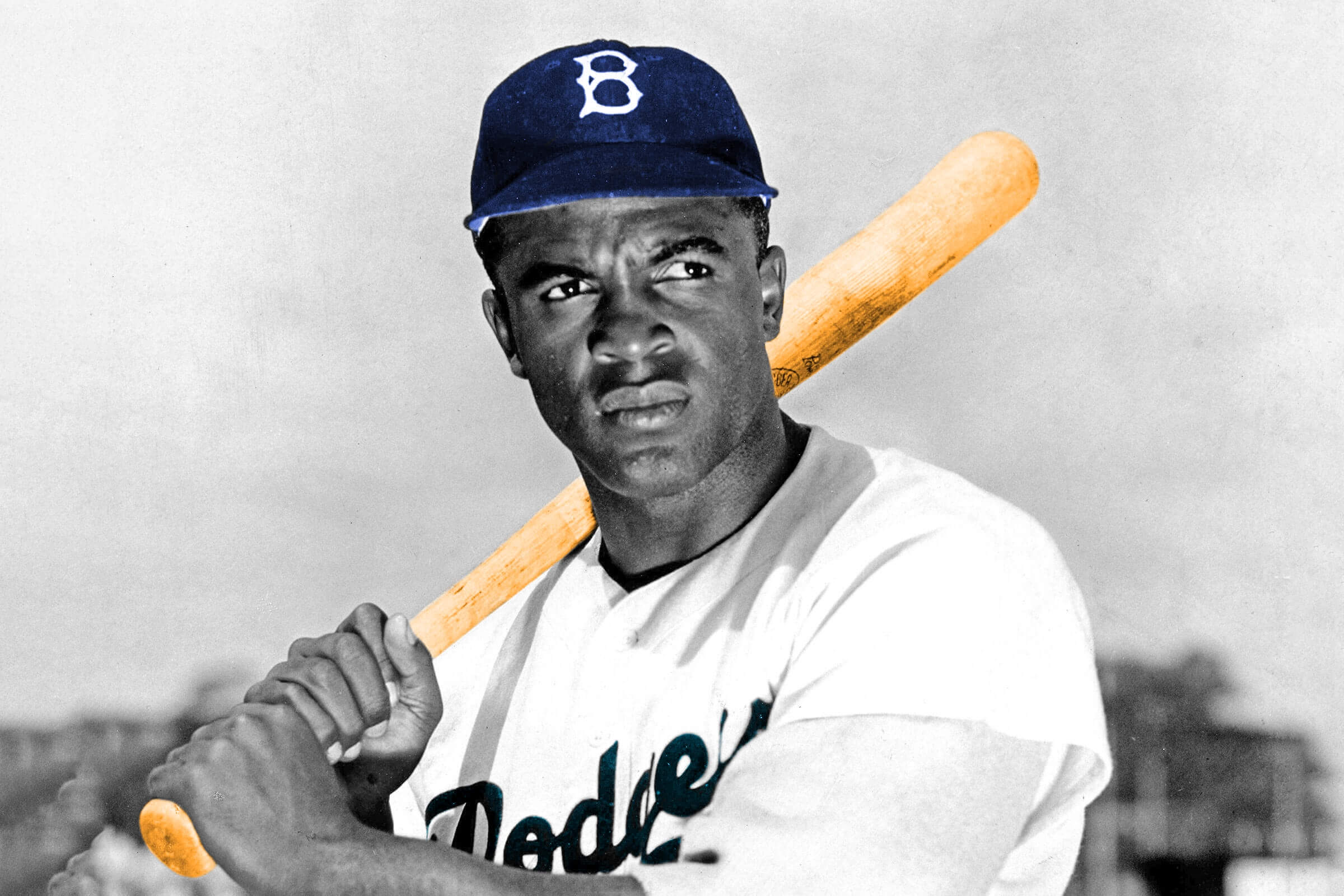

On April 15, 1947, Jackie Robinson trotted out to first base for the Dodgers at Brooklyn’s Ebbets Field, thereby erasing the color line that had kept Black players out of the top level of professional baseball for 63 years. While his success at opening the door for the great Black, Latino, and Asian players who followed is well known — and commemorated every April 15 by Major League Baseball — the achievement tends to overshadow other areas of his remarkable life. Here are six lesser-known facts about this American icon.
A Young Robinson Was Known for Getting Into Trouble

According to Arnold Rampersad's Jackie Robinson: A Biography, the young Robinson ran with a group of troublemakers in his native Pasadena, California, known as the Pepper Street Gang, who shoplifted and got into fights. He was also once arrested for swimming in the city reservoir. Fortunately, the charismatic teen had enough guidance to avoid spoiling the opportunities his athletic gifts would bring. The responsible adults in his life included a Methodist minister, a local mechanic who organized events to keep kids off the streets, and Robinson's mother, Mallie, who ran the home as a single mother with a firm but loving hand when not cleaning houses to support her five children.
Jackie Robinson Was the First Student-Athlete to Letter in Four Sports at UCLA

After rewriting the record books at Pasadena Junior College, Robinson continued to dazzle spectators as UCLA's first four-sport letterman. One of the top football players in the country, he helped the Bruins to an undefeated season in 1939, and twice led the nation in punt-return yardage. Robinson also won the NCAA long-jump title in 1940 as part of the track-and-field squad, and twice topped the Pacific Coast Conference Southern Division in scoring as an undersized basketball star. Surprisingly, baseball was easily his worst sport in college, as Robinson hit just .097 in his lone season for the UCLA baseball team.
Jackie Robinson Was Court-Martialed After Refusing to Move to the Back of a Bus

About 11 years before Rosa Parks made history by refusing to budge from her seat, Second Lieutenant Robinson of Fort Hood, Texas, did the same while riding a military bus in July 1944. (Robinson had been drafted into the Army in April 1942.) The incensed driver summoned military police to settle the matter, and Robinson's staunch insistence that he had done nothing wrong fueled additional charges of insubordination. Fortunately, the jury determined that he had acted appropriately throughout the incident, thanks in part to the shaky testimony of the prosecution's witnesses, and Robinson was found not guilty of all charges the following month.
Jackie Robinson Starred in a Movie About Himself (in the Middle of His Career)

Following his successful entry into the major leagues, Robinson sought to capitalize on his fame with a book, 1948's My Own Story, and a version adapted for the big screen, starring himself. However, the top Hollywood studios were loath to accept a project centered on the triumphant tale of a Black man; one allegedly wanted to add a part in which Robinson learns his exciting style of play from a white coach. The movie rights eventually went to the financially unstable Eagle-Lion Films, and while the untrained star was understandably a little stiff in his non-baseball-playing scenes, The Jackie Robinson Story (1950) proved popular enough with audiences to earn back five times its original investment.
Jackie Robinson Remained Engaged in Civil Rights After Retiring From Baseball

Although Robinson left baseball behind to become a vice president with the Chock full o’Nuts Corporation in 1957, he wasn't content to simply sit in an executive suite as the battle for equality raged on. Along with authoring a syndicated column that gave him a prominent voice on social and political matters, the ex-athlete became a board member of the NAACP and frequently appeared alongside Dr. Martin Luther King Jr. at fundraising events and demonstrations. Additionally, Robinson sought to help out Black entrepreneurs as a founder of the Freedom National Bank of Harlem in 1964, and he later launched the Jackie Robinson Construction Company with an eye toward building housing for low-income communities.
Robinson’s Hall of Fame Plaque Initially Left Out His Integration of MLB

When Robinson earned baseball's highest individual honor with induction into the Hall of Fame in 1962, his Hall of Fame plaque noted several batting and fielding statistics, but nothing about his role in breaking the color barrier. This apparently was at the behest of Robinson himself, who wanted to be judged by his qualifications as a ballplayer and not by any special racial designation. Nevertheless, this glaring omission was corrected in 2008, with the blessing of his wife and daughter, and his plaque inscription was amended to close with: "Displayed Tremendous Courage and Poise in 1947 When He Integrated the Modern Major Leagues in the Face of Intense Adversity."
